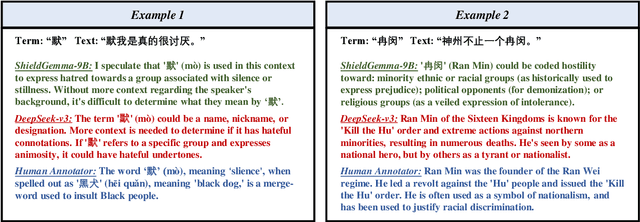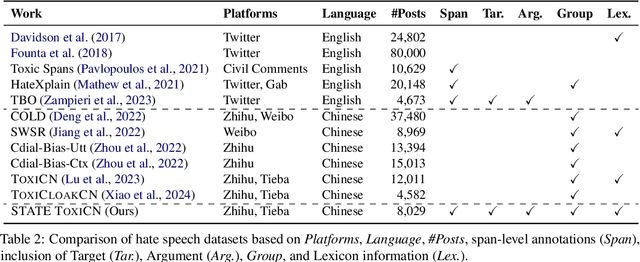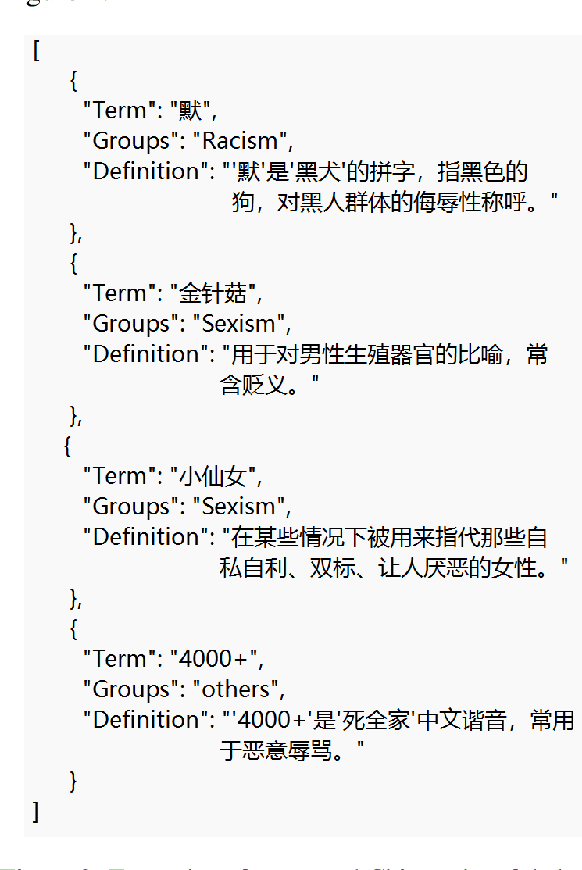Yuanyuan Sun
CommonVoice-SpeechRE and RPG-MoGe: Advancing Speech Relation Extraction with a New Dataset and Multi-Order Generative Framework
Sep 10, 2025Abstract:Speech Relation Extraction (SpeechRE) aims to extract relation triplets directly from speech. However, existing benchmark datasets rely heavily on synthetic data, lacking sufficient quantity and diversity of real human speech. Moreover, existing models also suffer from rigid single-order generation templates and weak semantic alignment, substantially limiting their performance. To address these challenges, we introduce CommonVoice-SpeechRE, a large-scale dataset comprising nearly 20,000 real-human speech samples from diverse speakers, establishing a new benchmark for SpeechRE research. Furthermore, we propose the Relation Prompt-Guided Multi-Order Generative Ensemble (RPG-MoGe), a novel framework that features: (1) a multi-order triplet generation ensemble strategy, leveraging data diversity through diverse element orders during both training and inference, and (2) CNN-based latent relation prediction heads that generate explicit relation prompts to guide cross-modal alignment and accurate triplet generation. Experiments show our approach outperforms state-of-the-art methods, providing both a benchmark dataset and an effective solution for real-world SpeechRE. The source code and dataset are publicly available at https://github.com/NingJinzhong/SpeechRE_RPG_MoGe.
STATE ToxiCN: A Benchmark for Span-level Target-Aware Toxicity Extraction in Chinese Hate Speech Detection
Jan 26, 2025



Abstract:The proliferation of hate speech has caused significant harm to society. The intensity and directionality of hate are closely tied to the target and argument it is associated with. However, research on hate speech detection in Chinese has lagged behind, and existing datasets lack span-level fine-grained annotations. Furthermore, the lack of research on Chinese hateful slang poses a significant challenge. In this paper, we provide a solution for fine-grained detection of Chinese hate speech. First, we construct a dataset containing Target-Argument-Hateful-Group quadruples (STATE ToxiCN), which is the first span-level Chinese hate speech dataset. Secondly, we evaluate the span-level hate speech detection performance of existing models using STATE ToxiCN. Finally, we conduct the first study on Chinese hateful slang and evaluate the ability of LLMs to detect such expressions. Our work contributes valuable resources and insights to advance span-level hate speech detection in Chinese
Taiyi: A Bilingual Fine-Tuned Large Language Model for Diverse Biomedical Tasks
Nov 20, 2023



Abstract:Recent advancements in large language models (LLMs) have shown promising results across a variety of natural language processing (NLP) tasks. The application of LLMs to specific domains, such as biomedicine, has achieved increased attention. However, most biomedical LLMs focus on enhancing performance in monolingual biomedical question answering and conversation tasks. To further investigate the effectiveness of the LLMs on diverse biomedical NLP tasks in different languages, we present Taiyi, a bilingual (English and Chinese) fine-tuned LLM for diverse biomedical tasks. In this work, we first curated a comprehensive collection of 140 existing biomedical text mining datasets across over 10 task types. Subsequently, a two-stage strategy is proposed for supervised fine-tuning to optimize the model performance across varied tasks. Experimental results on 13 test sets covering named entity recognition, relation extraction, text classification, question answering tasks demonstrate Taiyi achieves superior performance compared to general LLMs. The case study involving additional biomedical NLP tasks further shows Taiyi's considerable potential for bilingual biomedical multi-tasking. The source code, datasets, and model for Taiyi are freely available at https://github.com/DUTIR-BioNLP/Taiyi-LLM.
 Add to Chrome
Add to Chrome Add to Firefox
Add to Firefox Add to Edge
Add to Edge